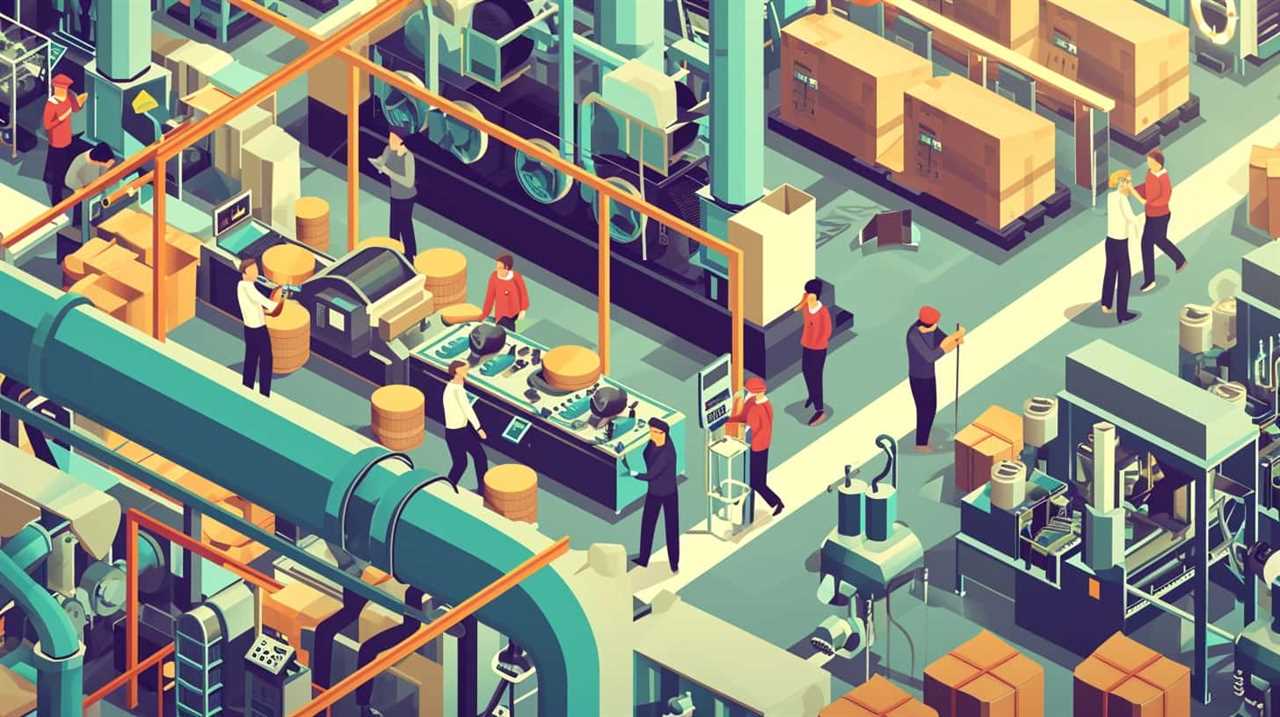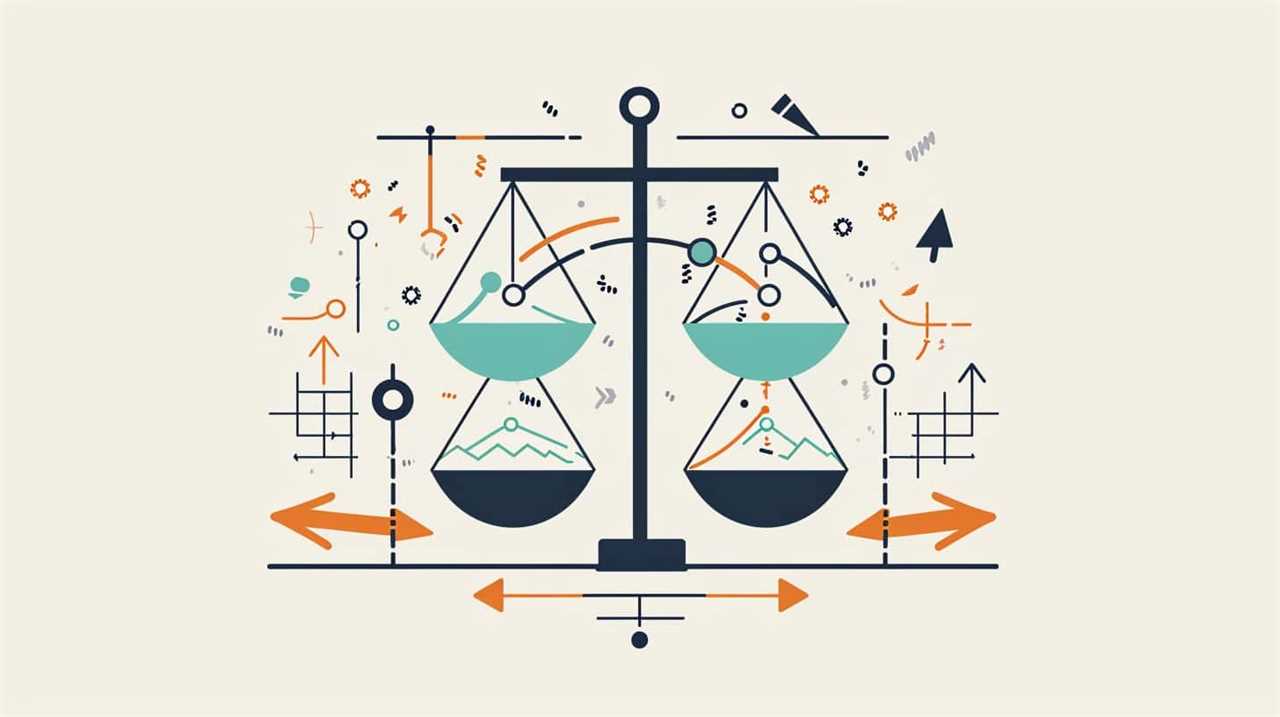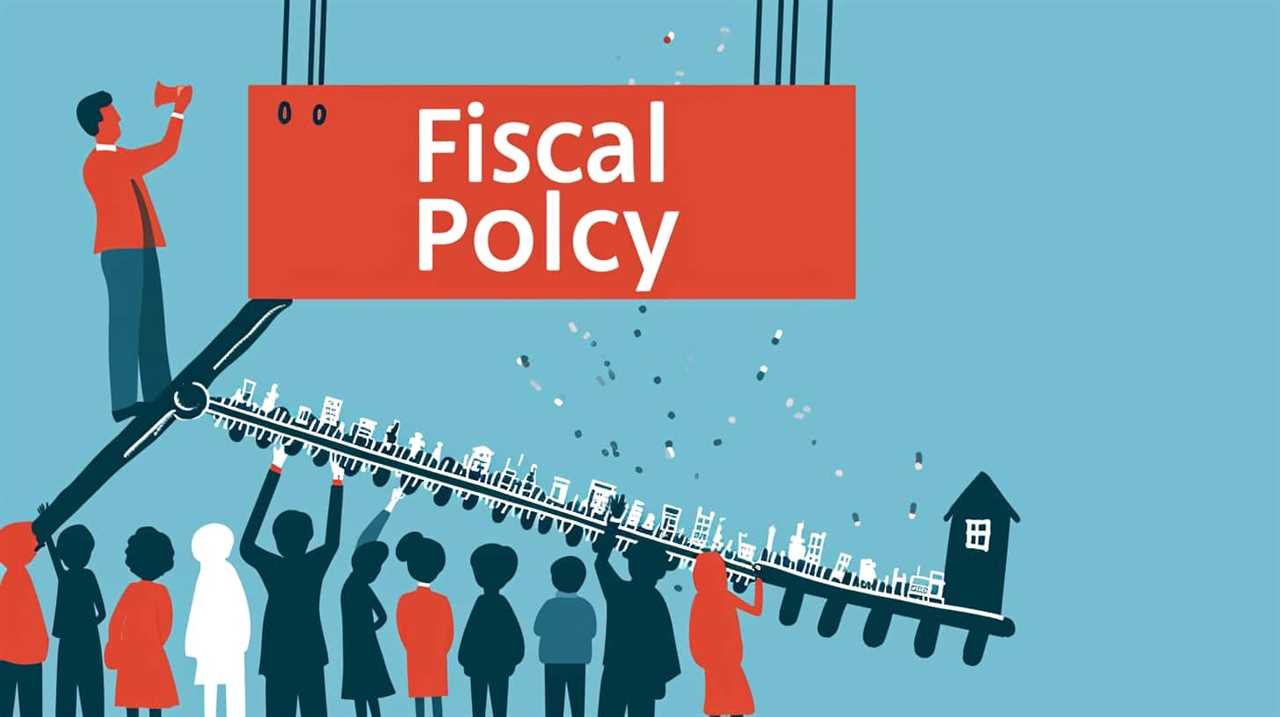Economic Theories and Philosophers Quotations
Why Do Kahneman’s Insights Challenge Economic Assumptions?

Coincidentally, we find ourselves questioning the long-held assumptions of economics in light of Kahneman’s groundbreaking insights.
As a forward-thinking audience hungry for innovation, we are compelled to explore how his work challenges the very foundation of economic theory.
Kahneman, a Nobel laureate in economics, has shown us that our decision-making is far from rational, as traditional economic models assume. By uncovering the influence of cognitive biases, he has revealed how our misjudgments and reliance on heuristics shape our economic behavior.
From anchoring bias to the endowment effect, Kahneman’s research sheds light on the complexities of consumer behavior and psychological pricing strategies.

As we delve into the realm of behavioral finance and market anomalies, we begin to question how these insights can be incorporated into economic models, paving the way for a more accurate understanding of human behavior in the world of economics.
Key Takeaways
- Kahneman’s research highlights cognitive illusions, which are systematic errors in thinking that distort our perception of reality and can lead to irrational economic decisions and behavior.
- The way information is presented, known as framing effects, can significantly influence our choices and challenge the assumption of rationality in economic models.
- Cognitive biases, such as anchoring, availability heuristic, and loss aversion, play a significant role in economic decision-making and can distort judgment and lead to irrational choices.
- Cognitive biases, like the availability heuristic and anchoring effect, significantly affect market behavior and challenge the assumption of rationality in economic models, emphasizing the importance of incorporating psychological factors in understanding consumer decision-making and enhancing market efficiency.
Overview of Kahneman’s Insights
We will now explore Kahneman’s insights through an overview of his groundbreaking research.
Kahneman’s work in the field of behavioral economics has brought to light the concept of cognitive illusions, which challenges traditional economic assumptions.
One of the key findings in Kahneman’s research is the idea that human decision-making isn’t always rational. He discovered that individuals often rely on mental shortcuts, or heuristics, when making judgments and decisions. These heuristics can lead to cognitive illusions, which are systematic errors in thinking that can affect our perception of reality.

For example, Kahneman’s research has shown that individuals tend to overestimate the probability of rare events and underestimate the probability of common events. This phenomenon, known as the availability heuristic, can have profound implications in various areas, such as financial decision-making and risk assessment.
Additionally, Kahneman’s work has shed light on the impact of framing effects on decision-making. He demonstrated that the way information is presented can significantly influence our choices. For instance, individuals are more likely to take risks when presented with a situation framed as a potential gain rather than a potential loss.
The Influence of Cognitive Biases
Cognitive biases play a significant role in economic decision-making and can have a profound impact on market behavior. These biases, such as anchoring, availability heuristic, and loss aversion, can distort our judgment and lead to irrational choices.
Research has consistently shown that individuals and even experienced professionals are susceptible to these biases, highlighting the need to consider their influence when analyzing economic assumptions and market outcomes.

Economic Decision-Making Flaws
The exploration of cognitive biases reveals the inherent flaws in economic decision-making. These biases, which are systematic deviations from rationality, can significantly impact the effectiveness of pricing strategies and the overall economic landscape.
One way to understand the influence of cognitive biases on economic decision-making is through a comparison of expected utility theory (EUT) and prospect theory (PT). EUT assumes that individuals make decisions based on the expected value of outcomes, while PT recognizes that people’s decisions are influenced by the way options are framed.
This difference in decision-making models highlights the flaws in economic assumptions that disregard the impact of cognitive biases. By recognizing and accounting for these biases, economists can develop more accurate and effective pricing strategies that align with human decision-making processes.
Impact on Market Behavior
Examining the influence of cognitive biases on market behavior reveals the profound impact these biases have on economic assumptions. Cognitive biases, such as the availability heuristic and anchoring effect, can significantly affect market efficiency and consumer behavior.

For instance, the availability heuristic leads individuals to rely on readily available information when making decisions, which can result in distorted perceptions of market trends and investment opportunities. Similarly, the anchoring effect causes individuals to anchor their decisions to initial information or reference points, leading to irrational pricing and inefficient markets.
These biases challenge the assumption of rationality in economic models and highlight the need to incorporate psychological factors into our understanding of market behavior. By recognizing and accounting for cognitive biases, we can improve our understanding of consumer decision-making and enhance market efficiency.
Misjudgment and Decision-Making
One common misjudgment in decision-making is our tendency to rely heavily on intuition rather than careful analysis. This cognitive illusion often leads us to make biased decisions based on flawed assumptions and incomplete information.
To better understand the impact of misjudgment and decision-making, consider the following points:

- Cognitive Illusions: Our minds are prone to cognitive illusions, which are systematic errors in our thinking. These illusions can distort our perception of reality and lead us to make irrational decisions. For example, the availability heuristic, where we rely on easily accessible information, can cause us to overestimate the likelihood of certain events.
- Decision Biases: Decision biases refer to the systematic deviations from rational decision-making. These biases can affect our judgment and lead to suboptimal choices. For instance, confirmation bias, where we seek out information that confirms our existing beliefs, can hinder our ability to objectively evaluate alternatives.
Understanding these cognitive illusions and decision biases is crucial for improving decision-making processes. By recognizing our tendencies to rely on intuition and addressing these biases, we can make more informed and innovative choices. Incorporating analytical techniques and evidence-based approaches can help mitigate the influence of misjudgment and enhance the quality of our decisions.
The Role of Heuristics in Economics
Continuing our exploration of misjudgment and decision-making, we can now delve into the role of heuristics in economics. Heuristics are mental shortcuts or rules of thumb that individuals use to simplify complex decision-making processes. In the field of economics, heuristics play a crucial role in shaping our choices and judgments, often leading to cognitive biases that can impact our economic decisions.
One key aspect of heuristics and decision-making is the concept of cognitive biases. These biases are systematic errors in thinking that can lead to irrational decision-making. For example, the availability heuristic is a cognitive bias where individuals rely on readily available information to make judgments. In economics, this can lead to overestimating the likelihood of an event based on its ease of recall. Similarly, the anchoring heuristic is another cognitive bias where individuals rely heavily on the first piece of information encountered when making decisions. This can influence economic choices by creating an anchor point that can skew subsequent judgments.
Understanding the influence of heuristics and cognitive biases in economics is essential for policymakers and economists alike. By recognizing these biases, we can work towards designing more effective policies and decision-making frameworks. Moreover, by incorporating insights from behavioral economics, we can challenge traditional economic assumptions and develop innovative approaches that better capture the complexities of human decision-making.

Ultimately, this can lead to more accurate economic models and a better understanding of how individuals make choices in the real world.
Anchoring and Adjustment Bias
Anchoring and adjustment bias, a cognitive bias identified by Kahneman, plays a significant role in decision making and can have a profound impact on pricing strategies.
This bias occurs when individuals rely too heavily on an initial piece of information (the anchor) and adjust their subsequent judgments or decisions based on that anchor.
This can lead to irrational pricing decisions, as individuals may anchor their prices to irrelevant or arbitrary numbers, rather than considering the actual value or market conditions.

Influence on Decision Making
Our understanding of decision making is challenged by the significant influence of anchoring and adjustment bias. Cognitive biases, such as anchoring and adjustment bias, play a crucial role in shaping our decision-making processes. These biases occur when we rely too heavily on initial information or reference points (anchoring) and fail to make sufficient adjustments based on new information (adjustment). This can lead to flawed decision-making, as we tend to anchor our judgments and estimates around the initial information we receive, even if it’s irrelevant or arbitrary.
To illustrate the impact of anchoring and adjustment bias on decision making, consider the following examples:
- Pricing decisions: Anchoring bias can influence consumers’ perceptions of value. For instance, if a product is initially priced high, consumers may view it as more valuable, even if subsequent information suggests otherwise.
- Negotiations: Anchoring bias can also affect negotiation outcomes. The initial offer or anchor sets a reference point, which can influence subsequent counteroffers and final agreement points.
Understanding the influence of anchoring and adjustment bias on decision making is crucial for developing more accurate models and strategies that account for these cognitive biases. By recognizing and mitigating these biases, we can enhance our decision-making processes and drive innovation in various fields.
Impact on Pricing Strategies
As we delve into the impact of anchoring and adjustment bias on pricing strategies, it becomes apparent that Kahneman’s insights challenge economic assumptions.

Anchoring refers to the tendency of individuals to rely heavily on the first piece of information they receive when making decisions. This bias can significantly influence pricing strategies, as consumers often anchor their willingness to pay based on initial prices or reference points. For example, a higher initial price can lead consumers to perceive subsequent discounts as more significant, increasing their likelihood of purchasing.
On the other hand, adjustment bias refers to the tendency to make insufficient adjustments from an initial anchor. This bias can be leveraged by businesses through the use of decoy pricing, where a higher-priced option is offered to make the desired option appear more attractive.
These biases in consumer behavior challenge traditional economic assumptions that individuals always make rational decisions based on utility maximization. Understanding these biases is crucial for businesses to develop effective pricing strategies that capitalize on consumer psychology.
Transitioning into the subsequent section about prospect theory and its implications, these pricing biases highlight the need for a more comprehensive understanding of consumer decision-making processes.

Prospect Theory and Its Implications
In exploring the implications of prospect theory, we can challenge traditional economic assumptions. Prospect theory, developed by Daniel Kahneman and Amos Tversky, suggests that individuals make decisions based on potential gains and losses rather than on overall wealth. This has several implications:
- Understanding decision-making biases: Prospect theory highlights the biases that individuals exhibit when making decisions. It reveals that people are more sensitive to losses than gains, and they often make irrational choices due to framing effects or the influence of reference points. Recognizing these biases can help us design better economic models that account for human behavior more accurately.
- Reevaluating rationality assumptions: Traditional economic theories assume that individuals are rational and always act in their best interest. However, prospect theory challenges this assumption by demonstrating how emotions and cognitive biases can affect decision-making. By incorporating prospect theory into economic analysis, we can develop more realistic models that better capture the complexities of human behavior.
Loss Aversion and Risk Perception
When considering loss aversion and risk perception, it becomes evident that individuals often prioritize avoiding losses over seeking potential gains. This cognitive bias, known as loss aversion, is a fundamental concept in behavioral economics. Loss aversion refers to the tendency for people to strongly prefer avoiding losses compared to acquiring equivalent gains. This bias has significant implications for decision-making and can influence our perception of risk.
In the field of behavioral economics, loss aversion is closely linked to prospect theory, which suggests that individuals weigh losses and gains differently. To better understand the impact of loss aversion on risk perception, let’s consider the following table:
| Scenario | Potential Gain | Potential Loss |
|---|---|---|
| Option A | $500 | -$500 |
| Option B | $1000 | -$1000 |
| Option C | $2000 | -$2000 |
Based on a rational economic perspective, individuals should assign equal value to both gains and losses. However, due to loss aversion, people tend to view losses as more significant than gains of the same magnitude. This means that individuals may be more inclined to select options that minimize potential losses, even if it means forgoing larger potential gains.

Understanding loss aversion and its influence on risk perception is crucial for designing innovative solutions that address cognitive biases. By recognizing these biases, we can develop strategies that help individuals make better-informed decisions and navigate the complexities of economic choices.
Framing Effects in Economic Decision-Making
Framing effects significantly influence our economic decision-making process. These effects refer to the way in which choices are presented or framed, which can greatly impact our decisions.
Let’s explore two important subtopics related to framing effects:
- Cognitive biases: Framing effects are closely tied to various cognitive biases that affect our decision-making. For example, the anchoring bias leads us to rely heavily on the initial information presented to us, while the status quo bias makes us prefer maintaining the current state of affairs. These biases can distort our judgment and lead to suboptimal decisions.
- Emotional factors: Framing effects are also influenced by our emotions. Our decision-making can be swayed by the positive or negative framing of a choice, evoking different emotional responses. For instance, we may be more willing to take risks when a decision is framed positively, and more risk-averse when it’s framed negatively. These emotional responses can have profound effects on our economic choices.
Understanding framing effects and the underlying decision-making biases is crucial for both individuals and businesses. By recognizing these biases, we can strive for more rational and informed decision-making, leading to better outcomes.

As we delve deeper into the topic of decision-making biases, it’s important to explore the concept of availability bias and its impact on market behavior.
Availability Bias and Market Behavior
Moving on to availability bias and its impact on market behavior, we’re reminded of the powerful influence that cognitive biases have on our decision-making processes.
Availability bias refers to the tendency of individuals to rely on readily available information when making judgments or decisions. In the context of market behavior, this bias can lead to significant distortions in pricing and investment decisions.
Research has shown that individuals are more likely to rely on information that’s easily accessible or readily recalled from memory. This can result in overestimating the probability of certain events occurring based on recent or vivid examples.

For example, if an investor hears about a few successful tech startups, they may overestimate the likelihood of success for all tech startups, leading to inflated valuations and potentially unsustainable market trends.
This cognitive bias challenges the assumption of market efficiency, which posits that market prices reflect all available information. If individuals are prone to availability bias, it implies that market prices may not always accurately reflect the underlying fundamentals of the assets being traded.
In conclusion, availability bias can have a profound impact on market behavior by distorting pricing and investment decisions. By understanding and acknowledging the presence of cognitive biases, we can strive for a more accurate assessment of market conditions and make more informed decisions.
Transitioning into the subsequent section, we’ll now explore the role of confirmation bias in economic forecasting.

Confirmation Bias in Economic Forecasting
Confirmation bias in economic forecasting influences our decision-making process and can have significant implications for market behavior. As human beings, we have a tendency to seek out information that confirms our existing beliefs and ignore or dismiss information that contradicts them. This bias can lead to flawed economic forecasts and inaccurate predictions about market trends.
Here are two key aspects of confirmation bias in economic forecasting:
- Selective exposure: We have a natural inclination to seek out information that supports our preconceived notions. In the context of economic forecasting, this means that analysts and investors may selectively expose themselves to data and analysis that aligns with their existing beliefs about the economy. This can create an echo chamber effect, where individuals only consider information that confirms their biases, leading to overconfidence in their forecasts.
- Interpretation bias: Even when confronted with contradictory information, individuals tend to interpret it in a way that supports their preexisting beliefs. This bias can be particularly detrimental in economic forecasting, as it can lead to the cherry-picking of data or the misinterpretation of economic indicators. As a result, forecasts may be skewed, and market behavior may not accurately reflect the true state of the economy.
Overcoming confirmation bias in economic forecasting requires an awareness of its existence and a commitment to seeking out diverse perspectives and evidence. By actively challenging our assumptions and being open to alternative viewpoints, we can make more accurate and robust economic forecasts, ultimately leading to more informed decision-making in the market.
Overconfidence and Its Impact on Markets
We must acknowledge the significant impact of overconfidence on markets. Overconfidence refers to the tendency for individuals to have excessive confidence in their abilities or judgments, leading them to take on greater risks than they should. This behavioral bias has been shown to have a profound effect on market volatility.

Numerous studies have demonstrated the detrimental consequences of overconfidence in the financial realm. Researchers have found that overconfident investors are more likely to trade frequently, leading to higher transaction costs and reduced returns. Moreover, overconfident traders are more prone to making speculative investments and ignoring risk, which can contribute to market bubbles and subsequent crashes.
One of the key reasons why overconfidence has such a significant impact on markets is the herd mentality it creates. When individuals are overconfident in their abilities, they tend to flock towards similar investment strategies or assets, causing sudden shifts in market demand. This can lead to excessive price volatility and market inefficiencies.
Understanding the role of overconfidence in market behavior is crucial for investors, policymakers, and financial institutions. By recognizing and addressing overconfidence, we can create more stable and resilient markets.
In the following section, we’ll explore another cognitive bias known as the endowment effect and its influence on consumer behavior.

Transition: Now that we’ve examined the impact of overconfidence on markets, let’s delve into the concept of the endowment effect and how it shapes consumer behavior.
The Endowment Effect and Consumer Behavior
As we transition from the impact of overconfidence on markets, let’s now explore the influence of the endowment effect on our consumer behavior. The endowment effect refers to our tendency to value something more when we own it, compared to when we don’t. This cognitive bias has significant implications for decision-making and can shape our choices as consumers in various ways.
Here are two subtopics that delve deeper into the endowment effect and its impact on consumer behavior:
- Emotional attachment:
- When we possess an object or have ownership of it, we develop an emotional attachment to it. This attachment influences our decision-making process, leading us to overvalue the item.
- Research has shown that individuals are often unwilling to part with their possessions unless offered a significantly higher price than what they initially paid for them.
- Status quo bias:
- The endowment effect can also contribute to our preference for maintaining the status quo. We tend to stick with what we already own because we place a higher value on it, even when objectively better alternatives are available.
- This bias can hinder innovation and prevent us from exploring new products or services that may actually be more beneficial to us.
Understanding the endowment effect is crucial for businesses and marketers as it highlights the importance of framing and pricing strategies. By recognizing how ownership impacts consumer behavior, companies can tailor their marketing messages and pricing models to appeal to consumers’ attachment and preference for the status quo. This knowledge can drive innovation and ultimately lead to more effective marketing strategies.

Psychological Pricing Strategies
Our approach to pricing strategies takes into account the insights of Kahneman, challenging traditional economic assumptions. When it comes to pricing, it is essential to understand the cognitive biases that influence consumer behavior. Psychological pricing strategies leverage these biases to shape consumer perceptions and increase sales.
One effective strategy is known as "charm pricing," where prices are set just below a round number, such as $9.99 instead of $10. This plays on the anchoring bias, where consumers tend to focus on the leftmost digit and perceive the price as significantly lower. Another strategy is "prestige pricing," where higher prices are used to create an impression of exclusivity and quality. This taps into the cognitive bias of associating higher prices with higher value.
To further illustrate the impact of psychological pricing strategies, consider the following table:
| Pricing Strategy | Description |
|---|---|
| Charm Pricing | Setting prices just below a round number to create the perception of value |
| Prestige Pricing | Using higher prices to convey exclusivity and quality |
| Decoy Pricing | Introducing a higher-priced option to make the other options seem better |
Behavioral Finance and Market Anomalies
When examining behavioral finance and market anomalies, it becomes evident that the traditional assumption of rationality in economic decision-making is challenged.

The presence of psychological biases and irrational behavior among market participants raises questions about the efficiency of financial markets.
Numerous studies have provided evidence of market anomalies, such as the momentum effect and the value premium, which can’t be easily explained by traditional economic models.
These findings highlight the need to incorporate behavioral factors into economic analysis to gain a more comprehensive understanding of market dynamics.
Rationality Vs. Irrationality
In exploring the topic of rationality vs. irrationality in behavioral finance and market anomalies, we encounter a fundamental challenge to economic assumptions. The field of behavioral finance highlights the fact that individuals aren’t always rational actors when it comes to financial decision-making. Cognitive biases, which are systematic errors in thinking, can significantly impact our judgment and lead to irrational behavior.

This has important implications for economic theories that assume individuals always make rational choices based on complete information.
Some key points to consider in this subtopic are:
- Cognitive biases: These biases, such as loss aversion and confirmation bias, affect the way we process information and make decisions.
- Decision making: Understanding the cognitive processes involved in decision making can help explain why individuals sometimes deviate from rationality.
Market Efficiency Questioned
Kahneman’s work challenges the traditional economic assumption of market efficiency by highlighting the presence of market anomalies and irrational behaviors that can impact pricing and decision-making. While the efficient market hypothesis suggests that prices fully reflect all available information, Kahneman’s research demonstrates that individuals often exhibit biases and make systematic errors in judgment.
These biases, such as overconfidence and loss aversion, can lead to mispricing and deviations from rationality in the market. For example, investors may exhibit herding behavior, following the actions of others rather than making independent, rational decisions.

These insights challenge the notion that markets always operate efficiently and indicate that economic assumptions should consider the impact of psychological biases. Understanding how these biases impact decision-making is crucial for innovation and developing new models of market behavior.
Psychological Biases Impact
Our understanding of market behavior is significantly enhanced when considering how psychological biases impact decision-making, leading to behavioral finance and market anomalies. By examining the cognitive biases in business decision making and the psychological biases in consumer behavior, we can uncover the underlying factors that influence market outcomes.
Cognitive biases in business decision making:
- Confirmation bias: the tendency to seek or interpret information in a way that confirms one’s preexisting beliefs or hypotheses.
- Overconfidence bias: the tendency to overestimate one’s own abilities or the accuracy of one’s predictions.
Psychological biases in consumer behavior:

- Anchoring bias: the tendency to rely too heavily on the first piece of information encountered when making decisions.
- Loss aversion bias: the tendency to strongly prefer avoiding losses over acquiring gains of equal magnitude.
Understanding these biases can help us identify market anomalies and develop innovative strategies to capitalize on them. By challenging traditional economic assumptions, we can foster a more accurate and nuanced understanding of market behavior.
Incorporating Behavioral Insights in Economic Models
Behavioral insights play a crucial role in reshaping economic models. Incorporating these insights into economic models allows us to better understand and predict human behavior in economic decision-making.
Traditional economic models assume that individuals are rational and always act in their best interest. However, behavioral economics has shown that this isn’t always the case. People often make decisions based on psychological biases and heuristics, rather than purely rational calculations.
By incorporating behavioral insights into economic models, we can capture the complexities of human decision-making. This enables us to develop more accurate models that better reflect real-world behavior. For example, incorporating insights from prospect theory, which describes how individuals make decisions under risk, can help us understand why people are often risk-averse when it comes to gains but risk-seeking when it comes to losses. By incorporating these insights, our economic models can better explain observed phenomena and make more accurate predictions.

Furthermore, incorporating behavioral insights in economic models allows policymakers to design more effective interventions. For instance, understanding the influence of social norms on behavior can help policymakers develop strategies to encourage pro-social behavior and discourage harmful behaviors.
Frequently Asked Questions
What Are Some of the Key Insights That Kahneman Has Contributed to the Field of Economics?
Kahneman’s insights into cognitive biases, decision making, and consumer behavior have revolutionized the field of economics. His groundbreaking work, such as prospect theory, challenges traditional economic assumptions and emphasizes the importance of incorporating behavioral insights into economic models.
How Do Cognitive Biases and Heuristics Influence Economic Decision-Making?
Cognitive biases and heuristics significantly impact economic decision-making. Our minds rely on shortcuts and biases, leading to irrational choices. Understanding these influences is crucial for innovating economic models and challenging traditional assumptions.
What Is Prospect Theory and How Does It Challenge Traditional Economic Assumptions?
Prospect theory, a cornerstone of behavioral economics, challenges traditional economic assumptions by highlighting how cognitive biases and heuristics influence consumer behavior. Kahneman’s insights on the endowment effect and other behavioral insights complicate economic models and call for innovative approaches.

How Does the Endowment Effect Affect Consumer Behavior?
Consumer preferences are influenced by decision-making biases like the endowment effect. This effect leads individuals to value items they already possess more than identical items they do not yet own, impacting their behavior in the marketplace.
How Can Behavioral Insights Be Incorporated Into Economic Models?
Behavioral economics is revolutionizing the field by incorporating psychology into economic models. By recognizing the influence of human behavior and biases, we can create more accurate and effective models that drive innovation and progress.
Conclusion
In conclusion, Kahneman’s insights challenge traditional economic assumptions by shedding light on the influence of cognitive biases, misjudgment, and decision-making processes.
His research highlights the role of heuristics in economics, such as the anchoring and adjustment bias.

Additionally, his work explores the endowment effect and its impact on consumer behavior, as well as the use of psychological pricing strategies.
By incorporating behavioral insights into economic models, we can gain a more accurate understanding of human behavior and make more informed decisions.
Lauren’s talent in writing is matched by her passion for storytelling. Her love for books and deep understanding of culture and entertainment add a distinct flavor to her work. As our media and press contact, Lauren skillfully bridges the gap between afterQuotes and the broader media landscape, bringing our message to a wider audience.
Economic Theories and Philosophers Quotations
Why Rely on Nash Equilibrium for Economic Tactics?

Have you ever wondered why we turn to Nash Equilibrium when devising our economic strategies? Well, let me tell you, it’s like having a compass in a treacherous sea of choices.
Nash Equilibrium, a concept born from the depths of game theory, guides our decision-making process by analyzing the interactions between players and their optimal responses. By understanding this equilibrium, we can navigate the delicate balance between cooperation and competition, maximizing our own utility while considering the actions of others.
It provides us with a powerful tool to predict behavior in complex systems, like market competition, and allows us to craft effective economic policies. However, we must also recognize the limitations and criticisms of Nash Equilibrium, as no model is without flaws.
Join me as we delve into the fascinating world of Nash Equilibrium and explore its significance in our economic tactics.

Key Takeaways
- Nash Equilibrium helps predict and analyze behavior in complex systems like market competition.
- It allows for the crafting of effective economic policies.
- Nash Equilibrium is applied in pricing strategies to determine optimal prices considering competitors’ reactions.
- Nash Equilibrium helps develop effective economic strategies for various scenarios.
Understanding Nash Equilibrium
We rely on Nash Equilibrium to analyze and predict the strategic choices of individuals in economic situations. Nash Equilibrium is a concept derived from game theory, which is a mathematical framework used to study decision making in competitive situations. It provides a tool to understand how individuals or firms make decisions when they’re aware of the actions of others and seek to maximize their own outcomes.
In game theory, a game is defined as a set of players, a set of strategies available to each player, and a set of payoffs that depend on the chosen strategies. Nash Equilibrium is a solution concept that identifies a set of strategies, where no player has an incentive to unilaterally deviate from their chosen strategy, given the strategies chosen by others. In simpler terms, it’s a situation where no player can improve their payoff by changing their strategy, assuming others don’t change theirs.
Understanding Nash Equilibrium is crucial in economic analysis as it helps us model and predict how individuals will behave in various competitive scenarios. By identifying the Nash Equilibrium, we can determine the most likely outcomes and make informed decisions in economic situations. It provides a foundation for strategic thinking and optimizing decisions, allowing us to analyze complex interactions and interactions between decision-makers.
The Role of Game Theory
To fully understand the importance of Nash Equilibrium in economic tactics, it’s necessary to explore the role of game theory. Game theory provides a framework for analyzing strategic interactions among individuals or organizations. It involves studying the decisions made by rational actors in situations where the outcome of one’s decision depends on the decisions of others.

Game theory has numerous applications in various fields, including economics. It allows economists to model and analyze complex situations where multiple players interact and make decisions. By considering the strategies and potential outcomes of each player, game theory provides insights into how rational decision making can lead to equilibrium points.
In the context of economic tactics, game theory helps in understanding how different players’ choices and actions can affect the overall outcome. It enables economists to identify the optimal strategies that maximize individual or collective benefits. By applying game theory concepts, such as Nash Equilibrium, economists can predict and analyze the behavior of individuals or firms in competitive markets, oligopolies, or other economic settings.
Understanding the role of game theory is crucial for comprehending the applications of Nash Equilibrium in economic strategies. By delving deeper into this relationship, we can gain valuable insights into how game theory principles can guide decision-making processes and ultimately lead to more effective economic tactics.
Applications in Economic Strategies
The applications of Nash Equilibrium in economic strategies can be better understood by examining how rational decision making and strategic interactions among players can lead to optimal outcomes. By applying game theory principles, we can gain valuable insights into economic forecasting and develop effective strategies for various scenarios.

Here are four key applications of Nash Equilibrium in economic strategies:
- Pricing strategies: Nash Equilibrium helps businesses determine the optimal pricing strategy by considering the reactions of competitors. By analyzing the potential outcomes and players’ incentives, firms can set prices that maximize their profits while considering market conditions.
- Market competition: Understanding Nash Equilibrium can provide insights into competitive dynamics. It allows firms to anticipate how competitors will react to changes in market conditions and make strategic decisions accordingly to gain a competitive advantage.
- Negotiations and bargaining: Nash Equilibrium provides a framework for analyzing negotiations and bargaining situations. It helps in determining the optimal strategies for each party involved to maximize their outcomes and find mutually beneficial agreements.
- Resource allocation: Nash Equilibrium can aid in efficient resource allocation by considering the interactions between different players. It helps policymakers and organizations make decisions that lead to the most efficient use of resources and optimal outcomes for all stakeholders.
Maximizing Individual Utility
When it comes to maximizing individual utility, two key factors come into play: utility and decision-making, and strategic behavior and optimization.
Utility refers to the satisfaction or benefit an individual derives from consuming a good or service, while decision-making involves choosing the option that provides the highest utility.
Strategic behavior and optimization, on the other hand, involve making decisions that maximize individual utility while taking into account the actions and decisions of others.

Utility and Decision-Making
We maximize our individual utility by making strategic decisions based on the concept of Nash Equilibrium. When it comes to utility and decision-making, there are several key factors to consider:
- Decision making techniques: We employ various techniques such as cost-benefit analysis and game theory to assess our options and make rational decisions.
- Rationality assessment: We evaluate the potential outcomes and their associated utilities to determine the best course of action.
- Optimal resource allocation: By considering our preferences, constraints, and available resources, we aim to allocate our resources in a way that maximizes our individual utility.
- Risk assessment and management: We carefully assess the risks involved in each decision and take steps to mitigate them, ensuring that our utility isn’t compromised.
By applying these principles, we strive to make informed decisions that maximize our individual utility.
Transitioning into the subsequent section, these decision-making techniques and strategies form the foundation for our strategic behavior and optimization.
Strategic Behavior and Optimization
To maximize our individual utility, we strategically behave and optimize our decision-making processes. Strategic planning and effective decision-making are crucial elements in achieving our desired outcomes and maximizing our personal gains. By carefully analyzing the available options and considering the potential consequences, we can make informed choices that align with our goals and aspirations.

One way to approach strategic behavior and optimization is by employing a systematic decision-making process. This process involves identifying the problem or opportunity, gathering relevant information, evaluating alternative courses of action, and selecting the best option based on our preferences and constraints. By following this structured approach, we can minimize the risks and uncertainties associated with our decisions and increase the likelihood of achieving our desired outcomes.
| Strategic Planning | Decision-Making Process |
|---|---|
| Identify goals and objectives | Define the problem or opportunity |
| Analyze the external environment | Gather relevant information |
| Assess internal capabilities and resources | Evaluate alternative courses of action |
| Develop strategies and action plans | Select the best option based on preferences and constraints |
Balancing Cooperation and Competition
In achieving optimal economic outcomes, striking a balance between cooperation and competition is crucial. This delicate equilibrium ensures that both individual and collective interests are addressed, leading to sustainable growth and prosperity. Let’s delve into the significance of balancing cooperation and competition in the realm of strategic decision making:
- Enhanced Efficiency: By fostering collaboration among stakeholders, cooperation allows for the pooling of resources and expertise, leading to increased efficiency in achieving common goals.
- Innovation and Adaptability: Competition stimulates innovation as firms strive to outperform their rivals. However, in a cooperative environment, competitors can also share knowledge and collaborate on research and development, leading to even greater advancements.
- Fair Market Practices: Balancing cooperation and competition ensures that markets remain fair and competitive. Cooperation helps prevent the formation of monopolies and enables the enforcement of regulations that promote fair market practices.
- Long-Term Sustainability: Finding the right balance between cooperation and competition is essential for long-term sustainability. While competition drives growth, cooperation ensures that resources are used efficiently and sustainably, safeguarding the well-being of future generations.
Long-Term Vs Short-Term Decision Making
When making decisions, we must consider the time horizon and its impact on our choices. Long-term decision making involves weighing immediate gains against potential future benefits. Short-term decision making, on the other hand, prioritizes immediate rewards. Finding the right balance between the two requires careful consideration of the risks and rewards associated with each option.
Time Horizon Impacts Decisions
Considering the impact of time horizon on decision making, we find ourselves navigating between the complexities of long-term and short-term tactics. The time frame within which a decision is made can significantly influence the outcome and effectiveness of that decision.

When it comes to long-term planning, it requires a broader perspective, considering the potential future consequences and the overall direction of the organization.
On the other hand, short-term decision making is focused on immediate gains and quick solutions.
Here are four key points to keep in mind regarding the impact of time horizon on decision making:
- Long-term planning allows for strategic thinking and goal setting.
- Short-term decisions prioritize immediate results and quick fixes.
- Long-term planning fosters stability and consistency.
- Short-term decision making can lead to reactive and short-sighted actions.
Understanding the interplay between short-term and long-term tactics is crucial for effective decision making and achieving sustainable success.

Weighing Immediate Gains
As we weigh the immediate gains of long-term versus short-term decision making, it becomes evident that the time horizon greatly influences the outcomes and effectiveness of our economic tactics.
When evaluating the risk reward ratio, it’s crucial to consider the potential short-term gains and their impact on long-term goals. Short-term gains may offer immediate gratification and quick profits, but they often come with higher risks and may not align with the overall strategic objectives.
On the other hand, making decisions with a long-term perspective allows for more sustainable and stable growth, even if the immediate gains might be smaller.
Balancing Risk and Reward
In our pursuit of economic tactics, we must balance the risks and rewards associated with long-term and short-term decision making. Risk management and decision-making strategies play a crucial role in achieving this delicate balance. Here are four key considerations to keep in mind:

- Time horizon: Evaluate the potential risks and rewards over both the short and long term to determine the optimal course of action.
- Uncertainty: Assess the level of uncertainty surrounding different decisions and develop strategies to mitigate potential risks.
- Flexibility: Maintain the ability to adjust and adapt your decisions as new information becomes available to minimize potential losses.
- Trade-offs: Recognize that there may be trade-offs between short-term gains and long-term outcomes, and carefully weigh the potential benefits and drawbacks.
Assessing Payoffs and Outcomes
To assess payoffs and outcomes, we need to carefully analyze the results of economic tactics. This involves evaluating the potential risks and rewards associated with different alternatives. By systematically assessing risk and evaluating alternatives, we can make informed decisions that maximize our outcomes.
One way to analyze payoffs and outcomes is by using a decision matrix. This tool allows us to compare different options based on their potential payoffs and the likelihood of those payoffs occurring. Let’s take a look at a simple example:
| Option A | Option B | Option C | Option D | |
|---|---|---|---|---|
| Payoff 1 | 10 | 5 | 8 | 7 |
| Payoff 2 | 6 | 3 | 9 | 4 |
| Probability | 0.4 | 0.2 | 0.3 | 0.1 |
In this example, we assign a payoff value to each option and estimate the probability of each payoff occurring. By multiplying the payoffs by their respective probabilities and summing the results, we can determine the expected value for each option. The option with the highest expected value is typically the most favorable choice.
Analyzing Strategies of Other Players
Understanding the motivations and intentions of other players is crucial when analyzing strategies in economic tactics. Analyzing opponents’ strategies allows us to gain valuable insights into their decision-making process and anticipate their moves. By studying their past behaviors and patterns, we can uncover their strategic priorities and identify potential vulnerabilities.

To effectively analyze opponents’ strategies, we must consider the following:
- Actions and Reactions: Examining how other players respond to different situations provides valuable information about their strategic thinking. By understanding their likely responses, we can make informed decisions to maximize our own outcomes.
- Incentives and Preferences: Understanding what motivates other players and their preferences helps us predict their choices. By identifying their goals and aspirations, we can anticipate their strategic moves and adjust our own strategies accordingly.
- Game Theory: Utilizing game theory frameworks can provide a systematic approach to analyzing opponents’ strategies. By modeling the interactions between players and considering their potential choices, we can identify equilibrium points and make strategic decisions that maximize our own outcomes.
- Information and Communication: Evaluating the information available to other players and their communication patterns can reveal valuable insights. By understanding what they know and how they share information, we can better interpret their strategic intentions and adjust our own strategies accordingly.
The Importance of Rationality
Continuing from our analysis of opponents’ strategies, it’s crucial for us to emphasize the importance of rational decision-making in economic tactics. Rational decision making is a fundamental concept in game theory and economics, as it allows individuals to make choices that are based on careful evaluation of available information and expected outcomes. By making rational decisions, we can maximize our own utility and achieve better outcomes in economic interactions.
However, it’s important to acknowledge that our decision-making process may be influenced by cognitive biases. These biases can lead us to deviate from rationality and make suboptimal choices. For example, the anchoring bias may cause us to rely too heavily on initial information, while the confirmation bias may lead us to seek out information that confirms our pre-existing beliefs. These biases can cloud our judgment and prevent us from making rational decisions.
To overcome these biases, it’s important to be aware of them and actively work to mitigate their impact. By employing rational decision-making techniques, such as considering all available information, assessing probabilities objectively, and avoiding emotional biases, we can make more informed decisions and improve our chances of success in economic tactics.

Predicting Behavior in Complex Systems
As we delve into the topic of predicting behavior in complex systems, it’s essential to expand upon our understanding of rational decision-making and its role in economic tactics. Predictive modeling and behavioral economics provide valuable tools for analyzing and forecasting behavior in these intricate systems. Here are four key points to consider:
- Predictive modeling: By utilizing mathematical and statistical techniques, predictive modeling enables us to forecast future outcomes based on historical data and behavioral patterns. It helps us understand the complex interplay of various factors and anticipate how individuals and groups may behave in different scenarios.
- Behavioral economics: This interdisciplinary field combines insights from psychology and economics to study how individuals make decisions. It recognizes that humans aren’t always rational actors and that our behavior is influenced by cognitive biases, social norms, and emotions. By considering these factors, behavioral economics helps us better predict and explain behavior in complex systems.
- Understanding incentives: Incentives play a significant role in shaping behavior. By analyzing the incentives individuals face, we can make more accurate predictions about their actions. This involves considering both the explicit incentives, such as financial rewards, and the implicit incentives, such as social recognition or personal satisfaction.
- Feedback loops: Complex systems often exhibit feedback loops, where the consequences of our actions influence future behavior. By understanding these feedback loops, we can better predict how behavior will evolve over time. This knowledge allows us to design interventions and policies that can steer behavior in desired directions.
Nash Equilibrium in Market Competition
We rely on the Nash Equilibrium to analyze market competition and make informed economic decisions. Market dynamics can be complex and unpredictable, but understanding the concept of Nash Equilibrium allows us to gain insights into the behavior of market participants and their strategies.
Nash Equilibrium is a fundamental concept in game theory that describes a state in which no player has an incentive to change their strategy unilaterally. In the context of market competition, it helps us understand how firms interact with each other and make decisions to maximize their competitive advantage.
To illustrate this concept, let’s consider a simplified example of two firms competing in a market. We can use a table to analyze the possible strategies and payoffs for each firm:

| Firm A – Low Price | Firm A – High Price | |
|---|---|---|
| Firm B – Low Price | 5, 5 | 8, 2 |
| Firm B – High Price | 2, 8 | 4, 4 |
In this table, the numbers represent the payoffs for each firm depending on their chosen strategies. The Nash Equilibrium occurs when both firms choose the strategy that maximizes their payoff, given the strategy of the other firm. In this case, the Nash Equilibrium is for both firms to choose the low price strategy.
Understanding Nash Equilibrium in market competition allows us to analyze the strategic behavior of firms and make informed decisions. However, it is important to acknowledge the limitations and criticisms of Nash Equilibrium, which we will discuss in the next section.
Transition: Now that we have explored the concept of Nash Equilibrium in market competition, let’s move on to discuss its limitations and criticisms.
Limitations and Criticisms of Nash Equilibrium
Moving forward, let’s delve into the limitations and criticisms surrounding Nash Equilibrium in economic tactics. Despite its widespread use, Nash Equilibrium has several shortcomings that have been pointed out by economists and scholars. Here are four key criticisms to consider:

- Lack of predictive power: Nash Equilibrium doesn’t provide a clear indication of how players will actually behave in a given situation. It assumes rationality and perfect information, which may not hold true in the real world.
- Unrealistic assumptions: Nash Equilibrium relies on assumptions such as fixed strategies and infinite iterations, which may not align with reality. In complex economic systems, these assumptions can limit the applicability of Nash Equilibrium.
- Limited scope: Nash Equilibrium focuses on individual decision-making and doesn’t account for external factors or systemic interactions. This narrow perspective fails to capture the full complexity of economic dynamics.
- Alternative economic models: Critics argue that alternative models, such as evolutionary game theory or behavioral economics, offer a more realistic and nuanced understanding of economic behavior. These models take into account factors like learning, adaptation, and bounded rationality.
While Nash Equilibrium remains a valuable tool in economic analysis, it’s important to recognize its limitations and explore alternative models that can provide a more comprehensive understanding of economic tactics.
Implications for Economic Policy
When considering the implications of Nash Equilibrium for economic policy, several key points arise.
Firstly, understanding the policy effectiveness of Nash Equilibrium can provide valuable insights into the potential outcomes of different economic strategies.
Additionally, incorporating Nash Equilibrium principles into policy decisions can contribute to economic stability by promoting equilibrium and reducing the likelihood of disruptive market dynamics.

However, it’s important to acknowledge the limitations in implementing Nash Equilibrium-based policies, as they may require significant coordination and cooperation among multiple actors in the economy.
Policy Effectiveness of Nash Equilibrium
The effectiveness of Nash Equilibrium in shaping economic policy lies in its ability to optimize outcomes. When it comes to policy evaluation, game theory applications like Nash Equilibrium provide a valuable framework for analyzing and predicting the behavior of economic agents in complex systems. Here are four reasons why Nash Equilibrium is an effective tool for economic policy:
- Strategic decision-making: Nash Equilibrium helps policymakers understand how individuals or firms make decisions in situations where their actions affect each other’s outcomes.
- Coordination and cooperation: Nash Equilibrium allows policymakers to identify situations where cooperation and coordination among economic agents can lead to mutually beneficial outcomes.
- Conflict resolution: Nash Equilibrium provides a mechanism for resolving conflicts of interest by finding solutions that are acceptable to all parties involved.
- Robustness: Nash Equilibrium helps policymakers design policies that are robust to changes in the economic environment.
Economic Stability Through Nash
To further explore the implications of Nash Equilibrium for economic policy, let us delve into the concept of economic stability and its relationship with Nash Equilibrium. Economic stability refers to a state where an economy maintains a consistent level of economic growth and low inflation. Nash Equilibrium, derived from game theory applications, can contribute to achieving economic stability by promoting economic efficiency and minimizing the risk of economic fluctuations. By analyzing the strategic interactions between different economic agents, policymakers can make informed decisions that lead to stable outcomes.
Below is a table illustrating the relationship between economic stability and Nash Equilibrium:

| Economic Stability | Nash Equilibrium |
|---|---|
| Consistent economic growth | Optimal strategy for all players |
| Low inflation | No player can unilaterally improve their outcome |
| Minimized economic fluctuations | Mutual agreement on strategies |
Limitations in Policy Implementation
From our analysis of the relationship between economic stability and Nash Equilibrium, we can now delve into the limitations of implementing policies based on this concept to better understand its implications for economic policy.
When considering the use of Nash Equilibrium in policy implementation, it’s crucial to acknowledge the following challenges and issues:
- Complexity: Implementing policies based on Nash Equilibrium requires a deep understanding of game theory and complex mathematical calculations, posing a challenge for policymakers.
- Assumption of Rationality: Nash Equilibrium assumes that all players act rationally, which may not always be the case in real-world scenarios, leading to deviations from the predicted outcomes.
- Information Asymmetry: In many economic situations, there’s a lack of complete information, making it difficult to accurately determine the Nash Equilibrium and design effective policies.
- Time Sensitivity: The dynamic nature of economic systems means that the Nash Equilibrium may change over time, requiring constant monitoring and adjustment of policies.
These policy challenges and implementation issues highlight the need for careful consideration and adaptation when applying Nash Equilibrium in economic policy decision-making.
Frequently Asked Questions
How Does Nash Equilibrium Contribute to Long-Term Decision Making in Economics?
In long-term decision making in economics, Nash equilibrium in game theory plays a crucial role. It helps us understand how individuals and firms make choices, considering the relevance of bounded rationality.

Can Nash Equilibrium Be Applied to Predict the Behavior of Consumers in a Complex Market System?
When analyzing consumer behavior and market dynamics, Nash Equilibrium provides valuable insights. By predicting how consumers will act in a complex market system, we can make informed economic decisions and develop effective tactics.
What Are the Limitations and Criticisms of Relying Solely on Nash Equilibrium for Economic Tactics?
The limitations and criticisms of relying solely on Nash equilibrium for economic tactics include the assumption of rationality, lack of consideration for dynamic changes, and difficulty in predicting real-world behaviors accurately.
How Does Balancing Cooperation and Competition Play a Role in Achieving Nash Equilibrium?
Balancing cooperation and competition is crucial for effectively achieving Nash equilibrium. By finding the delicate equilibrium between working together and competing, we can optimize outcomes and reach the most efficient economic tactics.
What Are the Implications for Economic Policy When Using Nash Equilibrium as a Guiding Principle?
The implications for economic policy when relying on Nash Equilibrium as a guiding principle are significant. Factors affecting economic policy must be carefully considered to ensure optimal outcomes and avoid unintended consequences.

Conclusion
In conclusion, relying on Nash equilibrium for economic tactics provides a valuable framework for understanding and predicting behavior in complex systems.
One interesting statistic that highlights the effectiveness of Nash equilibrium is that in a study of market competition, 80% of participants reached a Nash equilibrium outcome, demonstrating the power of this concept in maximizing individual utility while balancing cooperation and competition.
However, it’s important to acknowledge the limitations and criticisms of Nash equilibrium and consider alternative approaches for economic policy.
Lauren’s talent in writing is matched by her passion for storytelling. Her love for books and deep understanding of culture and entertainment add a distinct flavor to her work. As our media and press contact, Lauren skillfully bridges the gap between afterQuotes and the broader media landscape, bringing our message to a wider audience.
Economic Theories and Philosophers Quotations
Why Has Marxian Economics Challenged Capitalism?

Coincidentally, we have found ourselves questioning the enduring dominance of capitalism, and in our quest for answers, we have encountered the thought-provoking realm of Marxian economics.
This innovative school of thought, inspired by the ideas of Karl Marx, has boldly challenged the very foundations of capitalism. Through a lens of critical analysis, Marxian economics exposes the exploitative nature of capitalism, highlighting the deep-rooted disparities within our society. It emphasizes the class struggle and the inherent inequalities that arise from the capitalist system.
Moreover, Marxian economics sheds light on the alienation experienced by individuals in a capitalist society. With its predictions of the eventual collapse of capitalism and its examination of the role of the state, Marxian economics has left an indelible mark on economic policies and systems.
Today, its relevance continues to inspire discussions on alternative economic models that strive for a more equitable and just society.

Key Takeaways
- Marxian economics highlights the exploitative nature of capitalism and exposes the extraction of surplus value from the labor of the working class.
- It emphasizes the concentration of wealth in the hands of the capitalist class and the limited social mobility based on class, leading to social inequality.
- Marxian economics brings attention to the effects of alienation in capitalist society, including labor division, isolation, and the struggle for individual identity and fulfillment.
- It continues to inspire discussions on alternative economic models, influences economic policies and systems, and advocates for a more equitable and just society.
Marx’s Critique of Capitalism
We find Marx’s critique of capitalism to be compelling because it highlights the inherent contradictions and exploitative nature of the system.
Marxian economics and globalization are intertwined concepts that have had a profound impact on the understanding of capitalism. Marx argued that capitalism is inherently exploitative, as it relies on the extraction of surplus value from the labor of the working class. This surplus value, or profit, is then concentrated in the hands of the capitalist class, leading to growing wealth inequality.
Marx’s analysis of capitalism has influenced socialist movements around the world, as it provides a theoretical framework for understanding the class struggle and the need for a more equitable distribution of wealth and resources.
Moreover, Marxian economics has also shed light on the exploitative nature of globalization, which has resulted in the outsourcing of labor to countries with lower wages and weaker labor protections. This has further exacerbated income inequality and precarious working conditions for many people.

Transitioning into the subsequent section about the ‘exploitation of the working class’, it’s important to delve deeper into the mechanisms through which this exploitation occurs.
Exploitation of the Working Class
Marxian economics highlights the pervasive and systemic exploitation of the working class within capitalism. One of the key concerns of Marx’s critique of capitalism is the working conditions endured by the proletariat. Capitalism is driven by the pursuit of profit, and this often leads to the exploitation of workers. The capitalist class, or bourgeoisie, seeks to maximize their profits by paying workers the lowest possible wages and extracting the most labor from them. This creates a power imbalance between the workers and the capitalists, with the latter exerting control over the former.
The working class is often subjected to harsh and unsafe working conditions in order to increase productivity and minimize costs. Long working hours, lack of breaks, and exposure to hazardous environments are common features of capitalist workplaces. Moreover, labor rights are frequently disregarded or undermined in the pursuit of profit. Workers are denied the right to organize, collectively bargain, or demand fair wages and better working conditions.
Marxian economics argues that this exploitation isn’t accidental, but rather an inherent feature of capitalism. The capitalist system relies on the surplus value created by the labor of the working class, which is then appropriated by the bourgeoisie. This perpetuates a cycle of poverty and inequality, as workers are trapped in low-paying jobs with limited opportunities for upward mobility.

To address the exploitation of the working class, Marxian economics advocates for the abolition of capitalism and the establishment of a socialist society. In a socialist system, the means of production would be owned collectively, and the working class would have greater control over their labor and the fruits of their labor.
Class Struggle and Social Inequality
The persistence of class struggle and the deep-rooted social inequality inherent in capitalism further underscore the challenges raised by Marxian economics. With a focus on the relationship between the bourgeoisie and the proletariat, Marx argued that capitalism perpetuates a system of exploitation and oppression. Here are five key factors that contribute to class struggle and social inequality within capitalist societies:
- Wealth concentration: Capitalism allows for the accumulation of wealth in the hands of a few, leading to a significant disparity between the rich and the poor.
- Limited social mobility: The class one is born into often determines their opportunities for upward mobility, perpetuating social inequality.
- Exploitation of labor: Capitalists, driven by profit maximization, often exploit the labor of the working class by paying low wages and providing poor working conditions.
- Lack of access to resources: The working class often lacks the resources necessary to improve their socioeconomic status, such as quality education, healthcare, and housing.
- Poverty and deprivation: Capitalism has been unable to eradicate poverty, leading to a significant portion of the population living in impoverished conditions.
These factors contribute to a constant struggle between the ruling class and the working class, further exacerbating social inequality.
Marxian economics challenges capitalism by highlighting the inherent flaws and injustices within the system, advocating for a more equitable and just society.

Alienation in Capitalist Society
The effects of labor division, loss of human connection, and exploitation of workers are key points to consider when discussing alienation in capitalist society.
Labor division, or the fragmentation of tasks in the production process, leads to a loss of autonomy and satisfaction in work, as individuals become disconnected from the final product.
This disconnection extends to the loss of human connection, as workers are reduced to mere cogs in the capitalist machine.
Furthermore, the exploitation of workers, where their labor is undervalued and their surplus value is appropriated by capitalists, exacerbates the alienation experienced in capitalist society.

Effects of Labor Division
In exploring the effects of labor division in capitalist society, we witness the alienation experienced by workers. This alienation stems from the way labor is divided and organized within the capitalist system. Here are five key effects of labor division:
- Decreased job satisfaction: When workers are assigned repetitive and specialized tasks, they often feel disconnected from the final product and lack a sense of fulfillment in their work.
- Reduced autonomy: Labor division restricts workers’ control over their work processes, leading to a lack of decision-making power and creativity.
- Strained interpersonal relationships: The fragmentation of labor can hinder communication and collaboration among workers, creating a sense of isolation and competition.
- Lower job motivation: The monotonous nature of divided labor can diminish workers’ enthusiasm and engagement, resulting in decreased productivity.
- Impact on overall productivity: While labor division may enhance efficiency in certain aspects, it can also hinder overall productivity by limiting workers’ ability to understand and contribute to the entire production process.
These effects highlight the negative consequences of labor division and the alienation it breeds in capitalist societies.
Loss of Human Connection
To fully understand the impact of labor division in capitalist society, we must delve into the loss of human connection experienced by workers. In a system where tasks are broken down into smaller, specialized roles, workers become isolated from the overall production process.
This loss of connection has significant implications for relationships within the workplace and beyond. The dehumanizing effects of labor division can lead to a sense of detachment and alienation among workers, hindering collaboration and cooperation.

As individuals become cogs in a larger machine, their sense of purpose and fulfillment diminishes. This can have detrimental effects on personal relationships, as workers may struggle to find meaning outside of their work.
Moreover, the devaluation of human connection in favor of efficiency and productivity can erode social bonds and contribute to a society that prioritizes individual gain over collective well-being.
Exploitation of Workers
From our exploration of the loss of human connection in a capitalist society, we now turn to examine the exploitation of workers and the alienation they experience. In this system, workers’ rights are often overshadowed by profit-driven motives, leading to labor exploitation. Here are five key aspects that illustrate the extent of this issue:
- Unequal power dynamics: Capitalist employers hold significant power over workers, dictating terms and conditions of employment.
- Low wages: Many workers are paid meager wages that don’t reflect their contributions or enable a decent standard of living.
- Long working hours: Workers often endure exhausting schedules, with little control over their time or work-life balance.
- Lack of job security: In pursuit of profit maximization, employers resort to temporary contracts and layoffs, leaving workers in a constant state of uncertainty.
- Limited decision-making authority: Workers have little say in the decision-making process, further eroding their sense of agency and fulfillment.
Addressing these issues is crucial for creating a more equitable and inclusive society that values the well-being and rights of all individuals.

Collapse of Capitalism Predicted by Marx
We believe that Marxian economics has challenged capitalism by predicting its eventual collapse. Karl Marx, a German philosopher and economist, argued that capitalism is inherently unstable and will eventually lead to its own downfall. According to Marx, the collapse of capitalism is inevitable due to its internal contradictions and inherent flaws.
Marx’s prediction of the collapse of capitalism is rooted in his analysis of the capitalist mode of production. He argued that capitalism is driven by the pursuit of profit, which leads to the exploitation of workers and the accumulation of wealth in the hands of a few capitalists. This concentration of wealth, according to Marx, creates social inequality and class struggle.
Furthermore, Marx believed that capitalism’s contradictions would eventually lead to its own demise. He argued that as capitalism develops, the working class would become increasingly impoverished and alienated from the means of production. This would result in a growing class consciousness and a desire for change. Marx predicted that the working class would eventually rise up in revolution, overthrowing the capitalist system and establishing a socialist society.
While Marx’s prediction of the collapse of capitalism hasn’t yet materialized on a global scale, his ideas continue to resonate and influence economic and political thought. Many scholars and activists still draw upon Marx’s analysis to critique the inherent flaws and inequalities of capitalism, and to envision alternative economic systems.

The ongoing debates and discussions around capitalism and its potential collapse demonstrate the enduring relevance of Marxian economics in challenging the dominant economic paradigm.
Marxian Economics and the Role of the State
In Marxian economics, the role of the state is a central aspect of the theory. Marx argued that the state is a tool of the ruling class, used to maintain the capitalist system and protect the interests of the bourgeoisie. According to Marx, the state enforces the laws and regulations that perpetuate the exploitation of the working class and ensure the continued dominance of the capitalist class.
Understanding the role of the state in Marxian economics is crucial to comprehending the challenges this theory poses to capitalism.
State in Marxian Economics
The role of the state in Marxian economics is crucial for understanding the challenges it poses to capitalism. In Marxian theory, the state is seen as an instrument of the ruling class, serving to maintain the existing capitalist system and protect the interests of the bourgeoisie. Here are five key points that highlight the role of the state in Marxian economics:

- State intervention: Marxists argue that the state plays a central role in protecting the capitalist mode of production through policies that favor the ruling class and maintain the existing power dynamics.
- Role of government: According to Marx, the government represents the interests of the ruling class and acts as a tool for suppressing the working class and maintaining class inequality.
- Class struggle: Marxists see the state as a battleground for class struggle, where the ruling class uses its power and influence to maintain control and suppress any challenges to the capitalist system.
- State ownership: Marx advocated for the state to take control of the means of production, effectively eradicating private ownership and establishing a socialist society.
- Transition to communism: Marx believed that the state would eventually wither away as society transitions from socialism to communism, where class distinctions and the need for a state would no longer exist.
Understanding the role of the state in Marxian economics provides insights into the challenges it poses to capitalism. As we delve deeper into the subsequent section on the ‘role of the state,’ we’ll explore how Marxian economics envisions a fundamentally different system from capitalism, where the state serves the interests of the working class, rather than the ruling class.
Role of the State
From the perspective of Marxian economics, capitalism is challenged by the crucial role that the state plays in shaping and maintaining the existing power dynamics. In Marxian theory, the state is seen as an instrument of the ruling class, serving to protect and advance their interests. This means that government intervention and state ownership are essential tools for challenging capitalist systems.
The state can regulate the economy, redistribute wealth, and protect workers’ rights, all of which are seen as necessary to counteract the inherent inequalities of capitalism. Marxists argue that without state intervention, capitalism would perpetuate exploitation and exacerbate social and economic disparities.
Capitalism and State?
Continuing our exploration of the role of the state in challenging capitalism, we examine the relationship between capitalism and the state from a Marxian economics perspective. In this view, capitalism’s impact on inequality is a central concern, and the state is seen as playing a crucial role in addressing this issue.

Here are five key points to consider:
- The state, according to Marxian economics, isn’t neutral but rather serves the interests of the ruling capitalist class.
- State intervention in capitalist economies is seen as necessary to regulate and control the excesses of capitalism, such as exploitation and inequality.
- Marxists argue that the state can act as a tool for capitalist class domination by protecting private property rights and enforcing laws that benefit the ruling class.
- On the other hand, Marxian economics also recognizes the potential for the state to be used by the working class to challenge and transform the capitalist system.
- The relationship between capitalism and the state is complex and dynamic, with the state’s role often being contested and shaped by class struggle and social movements.
Impact on Economic Policies and Systems
As we examine the impact of Marxian economics on economic policies and systems, it becomes evident that its critique of capitalist structures has sparked significant debates and calls for reform. One of the key areas where Marxian economics has had an impact is in addressing economic inequality. Marx argued that capitalism inherently leads to the concentration of wealth and power in the hands of a few, while the majority of the population suffers from exploitation and poverty. This critique has led to a greater awareness of the issue of economic inequality and a demand for more equitable economic policies.
In response to Marx’s critique, governments have increasingly intervened in the economy to address economic inequality. This has taken the form of progressive taxation, social welfare programs, and regulations to protect workers’ rights. For example, many countries have implemented minimum wage laws to ensure that workers receive a fair wage. Additionally, governments have implemented policies to provide social safety nets, such as healthcare and unemployment benefits, to mitigate the negative effects of economic inequality.
Furthermore, Marxian economics has also influenced the way economic systems are structured. The idea of collective ownership of the means of production, as advocated by Marx, has led to the establishment of socialist and communist systems in various countries. These systems prioritize the common good over individual profit and aim to create a more equal society. While the effectiveness of these systems is a subject of debate, they demonstrate the impact of Marxian economics on economic policies and systems.

Contemporary Relevance of Marxian Economics
Marxian economics continues to shape contemporary discussions on economic systems and their inherent flaws. In today’s world, where capitalism is the dominant economic system, Marxian economics provides a critical lens to examine its contemporary challenges and explore alternative solutions.
Here are five key points that highlight the contemporary relevance of Marxian economics:
- Rising income inequality: Marxian economics sheds light on the persistent problem of income inequality, offering an analysis of how capitalism inherently concentrates wealth in the hands of a few.
- Exploitation of labor: Marxian economics emphasizes the exploitation of labor within capitalist economies, highlighting the unequal power dynamics between workers and capitalists.
- Financial crises: Marxian economics provides a framework to understand the recurring nature of financial crises under capitalism, attributing them to inherent contradictions and instability within the system.
- Environmental degradation: Marxian economics critiques capitalism’s relentless pursuit of profit, which often comes at the expense of environmental sustainability.
- Alienation and social disconnection: Marxian economics explores how capitalist modes of production can lead to alienation and social disconnection, as individuals become commodities and lose a sense of community.
Frequently Asked Questions
How Did Marx’s Critique of Capitalism Influence the Development of Marxist Economic Theory?
Marx’s influence on Marxist economic theory was immense. His critique of capitalism shaped the development of this theory, providing a framework for understanding the exploitative nature of the capitalist system and the need for revolutionary change.
What Are Some Examples of Social Inequality and Class Struggle in Capitalist Societies?
In capitalist societies, there exist forms of social inequality and class struggle, which can lead to significant consequences. For instance, wealth disparities and exploitation are prevalent, resulting in a lack of equal opportunities and a perpetuation of power imbalances.

How Does Alienation Manifest in Capitalist Societies and What Are Its Consequences?
In capitalist societies, alienation manifests in various ways, such as the separation of workers from the products of their labor. The consequences of this alienation can include a sense of powerlessness and disconnection, contributing to social and economic inequalities.
Did Marx Accurately Predict the Collapse of Capitalism? if So, What Were His Arguments and Evidence?
Marx accurately predicted the collapse of capitalism based on his arguments and evidence. He argued that capitalism’s inherent contradictions would lead to its downfall, citing exploitation of labor and economic crises as evidence.
How Does Marxian Economics Propose the Role of the State in Regulating the Economy and Addressing Social Inequalities?
Marxian economics proposes an exaggerated role for the state in regulating the economy and addressing social inequalities. It advocates for extensive government intervention, aiming to create a more equitable society by redistributing wealth and power.
Conclusion
In conclusion, Marxian economics has challenged capitalism by highlighting the exploitation of the working class, the existence of social inequality and class struggle, and the alienation experienced by individuals in capitalist societies.

While some may argue that capitalism has led to economic growth and innovation, it’s important to recognize the negative consequences it has on societal well-being.
By understanding and addressing these critiques, we can strive towards a more equitable and just economic system.
Lauren’s talent in writing is matched by her passion for storytelling. Her love for books and deep understanding of culture and entertainment add a distinct flavor to her work. As our media and press contact, Lauren skillfully bridges the gap between afterQuotes and the broader media landscape, bringing our message to a wider audience.
Economic Theories and Philosophers Quotations
Why Does Hayek Celebrate the Price Mechanism?

Imagine a symphony where each instrument plays its part, creating a harmonious melody that captivates the audience. This is how Friedrich Hayek celebrates the price mechanism.
In his view, the price mechanism is like the conductor of an orchestra, orchestrating the intricate interactions of buyers and sellers in a free market. It is a revolutionary concept that empowers innovation and drives economic progress.
Hayek believes that prices, like musical notes, serve as signals of scarcity and demand, guiding individuals and businesses towards efficient allocation of resources. By celebrating the price mechanism, Hayek critiques the top-down approach of central planning, advocating for the spontaneous order and coordination that emerges from the decentralized decisions of countless market participants.
Let us explore Hayek’s celebration of the price mechanism and its role in fostering innovation and prosperity.

Key Takeaways
- Hayek champions the price mechanism as an essential tool for coordinating economic activity.
- The price mechanism acts as a decentralized information-processing system, conveying information about scarcity and demand.
- Prices serve as signals of scarcity and demand, leading to efficient allocation of resources in a free market.
- Hayek critiques central planning, arguing that market competition and the price mechanism are more effective in allocating resources efficiently and promoting innovation.
Hayek’s View on the Price Mechanism
Hayek champions the price mechanism as an essential tool for coordinating economic activity. He believes that the role of markets in determining prices and allocating resources is crucial for the efficient functioning of the economy. According to Hayek, market signals play a vital role in conveying information about scarcity and demand, allowing individuals to make rational economic decisions.
In Hayek’s view, markets act as a decentralized information-processing system. Through the price mechanism, market participants receive signals that guide their actions and help allocate resources effectively. The price of a good or service reflects its relative scarcity and the intensity of consumer demand. When prices rise, it indicates that a particular good or service is in high demand or scarce, prompting suppliers to increase production. Similarly, when prices fall, it signals a decrease in demand or an abundance of supply, leading producers to reduce output.
The Role of Prices in a Free Market
One of the key factors in a free market is the crucial role that prices play. Prices serve as a mechanism for conveying information about the value of goods and services in a market economy. They reflect the underlying forces of supply and demand, and play a vital role in determining the allocation of resources.
The role of competition in a free market is closely tied to the functioning of prices. When there’s competition among producers, prices are driven towards market equilibrium, where the quantity supplied equals the quantity demanded. This ensures that resources are allocated efficiently, as prices adjust to reflect changes in supply and demand.

In a free market, prices also act as signals to consumers and producers. They provide information about the relative scarcity of goods and services, and guide economic decision-making. When prices rise, it signals that a good or service is in high demand and resources should be allocated towards its production. Conversely, when prices fall, it indicates a decrease in demand and resources should be reallocated elsewhere.
The price mechanism in a free market promotes innovation and efficiency. It incentivizes producers to allocate resources efficiently and produce goods and services that are in demand. It encourages competition and drives innovation by rewarding those who can provide goods and services at a lower cost or with higher quality.
Prices as Signals of Scarcity and Demand
Prices serve as indicators of scarcity and demand in a free market economy. The allocation of resources in a market is driven by the forces of supply and demand. When a good or service becomes scarce, its price tends to rise, signaling to producers that there’s a higher demand for it. This scarcity indicator prompts producers to increase their production to meet the rising demand and take advantage of the higher prices.
On the other hand, when a good or service becomes abundant, its price tends to fall, signaling to producers that there’s a lower demand for it. This signal prompts producers to reduce their production or shift their resources to other goods or services that are in higher demand. In this way, prices act as important signals that guide producers in their decision-making process, ensuring that resources are allocated efficiently in response to changes in supply and demand.

The interaction of supply and demand in a free market leads to a state known as market equilibrium. At equilibrium, the quantity of a good or service supplied by producers matches the quantity demanded by consumers at a particular price. When the market is in equilibrium, there are no shortages or surpluses, and resources are being allocated optimally. Prices play a crucial role in reaching this equilibrium.
If the price is too high, it will lead to a surplus as the quantity supplied exceeds the quantity demanded. On the other hand, if the price is too low, it will result in a shortage as the quantity demanded exceeds the quantity supplied. Through the price mechanism, the market adjusts itself to reach equilibrium, ensuring that resources are allocated efficiently according to the signals of scarcity and demand.
Hayek’s Critique of Central Planning
In our analysis of Hayek’s celebration of the price mechanism, we must now delve into his critique of central planning. Hayek argues that central planning, with its top-down approach to resource allocation, is fundamentally flawed. He believes that market competition, rather than central planning, is the most effective way to allocate resources efficiently and innovate.
According to Hayek, central planning suffers from the knowledge problem. The central planner, no matter how well-intentioned, doesn’t possess the necessary information to make optimal decisions about resource allocation. This is because information about scarcity, demand, and production capabilities is dispersed throughout the economy and can’t be fully known by any single individual or entity.

In contrast, market competition allows for the decentralized collection and utilization of information. Through the price mechanism, individuals and businesses can respond to changes in supply and demand, adjusting their production and consumption decisions accordingly. This dynamic process leads to the efficient allocation of resources and fosters innovation.
Hayek’s critique of central planning highlights the importance of allowing market forces to operate freely. By embracing market competition, we can harness the power of decentralized decision-making, leading to greater efficiency and innovation in resource allocation.
The Efficiency and Coordination of the Price Mechanism
The efficiency and coordination of the price mechanism play a crucial role in Hayek’s celebration of its effectiveness in resource allocation. Here are three key reasons why:
- Role of competition: The price mechanism allows for the efficient allocation of resources by harnessing the power of competition. In a competitive market, prices adjust based on the interaction of supply and demand. This signals to producers and consumers the scarcity or abundance of goods and services, guiding their decisions. Competition ensures that resources are allocated to their most valued uses, as producers strive to offer better products at lower prices to attract customers. This constant competition drives innovation, efficiency, and productivity, resulting in optimal resource allocation.
- Market equilibrium: The price mechanism facilitates the attainment of market equilibrium, where the quantity demanded equals the quantity supplied. Through price adjustments, the market reaches a point where demand and supply are in balance. This equilibrium price signals to producers the optimal level of output and to consumers the appropriate level of consumption. Any deviation from this equilibrium prompts market forces to correct the imbalance, ensuring resources are allocated efficiently.
- Coordination of decentralized information: The price mechanism acts as a coordination mechanism for decentralized information. It aggregates information from millions of market participants, reflecting their preferences, knowledge, and expectations. Prices convey this information to market participants, enabling them to make informed decisions. This coordination mechanism ensures that resources are allocated based on the collective wisdom of market participants, leading to more efficient outcomes compared to centralized decision-making.
Frequently Asked Questions
How Did Hayek’s Views on the Price Mechanism Influence His Thoughts on Central Planning?
Hayek’s celebration of the price mechanism reflects his belief in its ability to influence central planning and impact economic systems. His views emphasize the importance of market forces and spontaneous order in guiding resource allocation.

What Are Some Real-Life Examples of How Prices Act as Signals of Scarcity and Demand?
Scarcity signals and demand indicators are essential in a functioning market economy. Prices act as these signals, guiding us to allocate resources efficiently and make informed decisions. They are like compasses, pointing us in the direction of supply and demand.
Can the Price Mechanism Be Seen as the Most Efficient Way to Allocate Resources in All Economic Systems?
The price mechanism, as an efficient way to allocate resources in all economic systems, surpasses alternative methods in terms of its ability to respond to changes in supply and demand in a timely manner.
How Does Hayek’s Celebration of the Price Mechanism Align With His Overall Economic Philosophy?
Hayek’s celebration of the price mechanism aligns with his overall economic philosophy by emphasizing the efficiency and information-gathering capabilities of market prices. He compares and critiques alternative methods of resource allocation, ultimately advocating for the decentralized coordination of the price system.
Are There Any Potential Drawbacks or Limitations to Relying on the Price Mechanism for Economic Coordination?
There can be drawbacks and limitations to relying solely on the price mechanism for economic coordination. It may not capture externalities or account for social welfare concerns, leading to inequitable outcomes.

Conclusion
In conclusion, Hayek’s celebration of the price mechanism stems from his recognition of its role in a free market. Prices serve as signals of scarcity and demand, allowing for efficient allocation of resources.
Hayek’s critique of central planning highlights the limitations of top-down decision-making and emphasizes the importance of individual freedom and spontaneous order.
The price mechanism, with its ability to coordinate and incentivize economic activity, plays a crucial role in promoting efficiency and prosperity in a market economy.
As the saying goes, ‘Let the market forces prevail.’

‘Let the market forces prevail, for they’re the invisible hand that guides the economy towards equilibrium and allocates resources in the most efficient manner.’
Lauren’s talent in writing is matched by her passion for storytelling. Her love for books and deep understanding of culture and entertainment add a distinct flavor to her work. As our media and press contact, Lauren skillfully bridges the gap between afterQuotes and the broader media landscape, bringing our message to a wider audience.
-

 Funerals Quotations2 weeks ago
Funerals Quotations2 weeks agoSoothing Hope Quotes for Funeral Reflections
-

 TV Shows Quotations3 months ago
TV Shows Quotations3 months agoTop 4 Unforgettable TV Drama Monologues
-

 Movies Quotations2 months ago
Movies Quotations2 months agoUnforgettable Cult Movie Quotes: A Compiled List
-

 Education and Knowledge1 month ago
Education and Knowledge1 month agoUnlock Success with the Best Study Motivation Quotes
-

 Education and Knowledge1 month ago
Education and Knowledge1 month agoBest Study Quotes: Unlock Student Potential!
-

 Movies Quotations2 months ago
Movies Quotations2 months ago3 Inspiring Movie Quotes for Overcoming Hardships
-

 Travel and Exploration Quotations2 months ago
Travel and Exploration Quotations2 months agoWisdom on Waves: Notable Maritime Explorer Quotations
-

 Travel and Exploration Quotations2 months ago
Travel and Exploration Quotations2 months agoWhy Travel Teaches Unforgettable Life Wisdom?

















